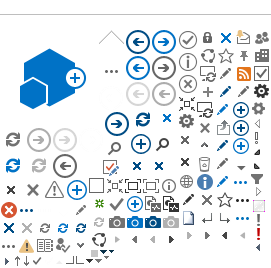D^2EPC, E-DYCE & ePANACEA Final Conference
Jun 01, 2023
Next Generation Energy
Performance Assessment, Rating and Certification: Towards a Smart and
Decarbonised Future for European Buildings
24 May 2023, Brussels 9:00
- 16:30 CEST
On the 24th of May, the D^2EPC project, together with E-Dyce and ePANACEA, organised its final conference, which took place in Brussels. Several stakeholders from all over Europe attended the event as they did not want to miss the opportunity to learn more about Next Generation EPCs.
The conference was divided into 4 main parts:
Part 1: Overall context, moderated by Mr. Alexander Deliyannis (Sympraxis), hosted speakers such as Pau Garcia Audi (DG ENER), Anastasiya Yurchyshyna, (ECTP), Flourentzos Flourentzou (ESTIA), and the coordinators of the 3 projects: Dimos Ioannidis from D^2EPC, Michal Pomianowski from e-Dyce and Maria Fernandez Boneta from ePANACEA. The three coordinators gave a quick introduction and perspective of each project.
Part
2: Synthesis of insights from the 3 projects, coordinated by Andrei Vladimir (REHVA). In
this section, a summary of insights from the 3 projects, represented by Stavros
Koltsios (D^2EPC), Michal Pomianowski & Giacomo Chiesa (e-Dyce), and Aitor Dominguez
& Laura Muhr (ePANACEA),
was made.
Part 3: Specific results of the 3 projects, was led by Maarten de Groote (VITO), with the participation of Paris Fokaides (D^2EPC), Olena Larsen, Giacomo Chiesa & Vagelis Alifragkis (e-Dyce) and Mohsen Sharifi & María Fernandez (ePANACEA). This part was concluded with questions from the audience to the representatives of the 3 projects.
Part 4: Third-party views,
was chaired by Paris Fokaides. In this last and most interactive part, Vivian
Dorizas gave a brief introduction about the changes in the EPBD related to the
EPC. After this, she joined a round table, together with Naghmeh Altmann,
Andrei Vladimir Litiu, Stavros Koltsios, and Leandro Madrazo. Moderated by
Paris Fokaides, 7 questions on different aspects of EPCs were discussed.
Finally, Sussanne Bruner and Laura Muhr, prepared an online quiz, where all the attendees, both physically and virtually could participate. They were introduced to different questions from the 3 projects in which they had to vote between different possible answers.
To conclude, each coordinator pointed out the highlights of the conference, which was a great opportunity to exchange information. It was observed that there are many things that the three projects have in common, such as identified gaps, however, each project is developing its own tool and methodology on how to overcome the recognised issues. The next steps are still unknown, but what is clear is that we will all continue to work in this field to improve the current assessment and thus contribute to the improvement of the building stock.
Photo: Sympraxis Team / Springtime / Antoine Henrion
